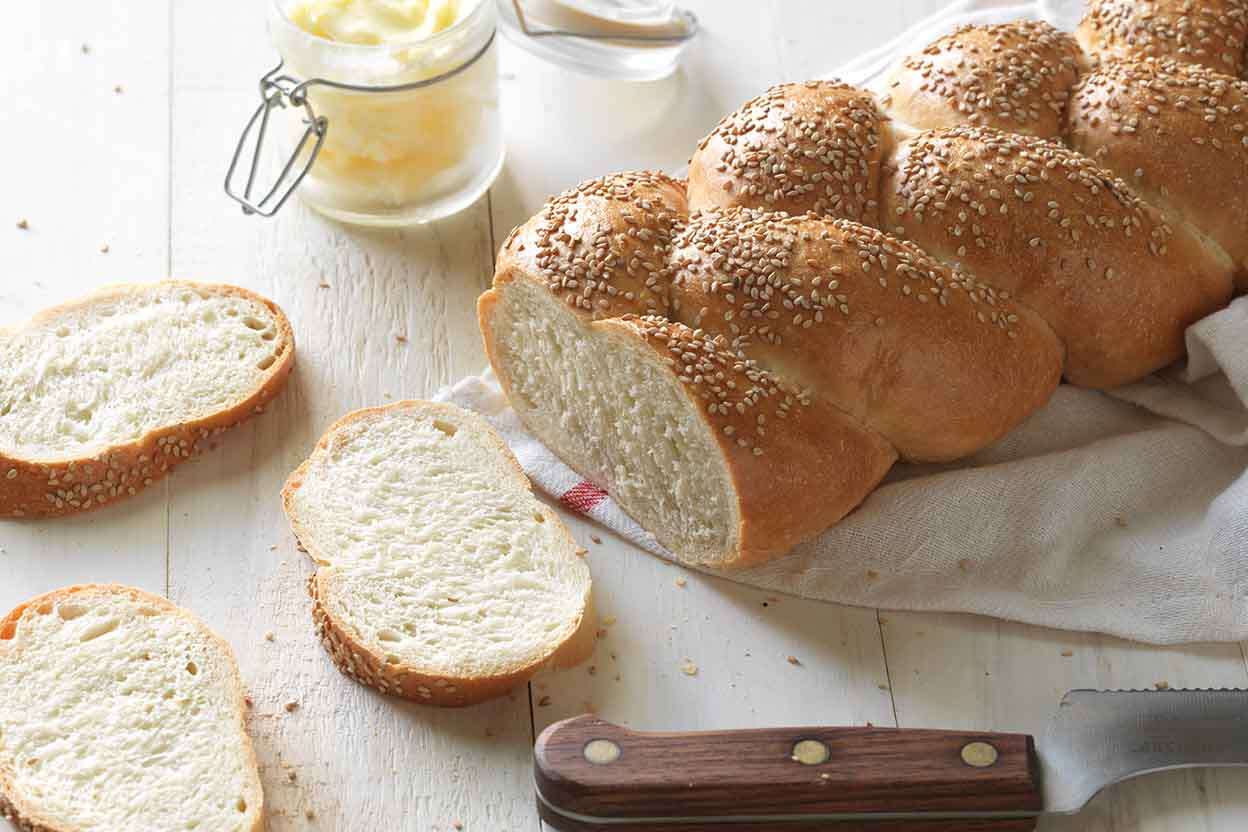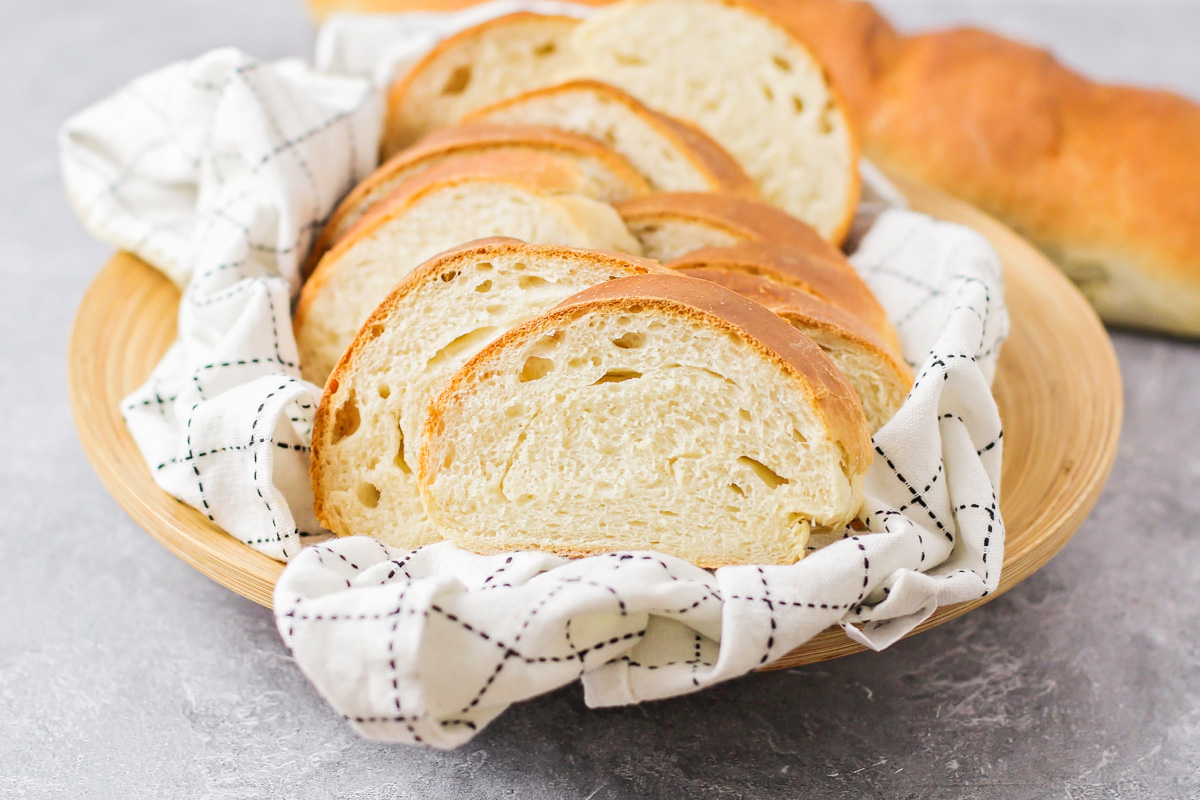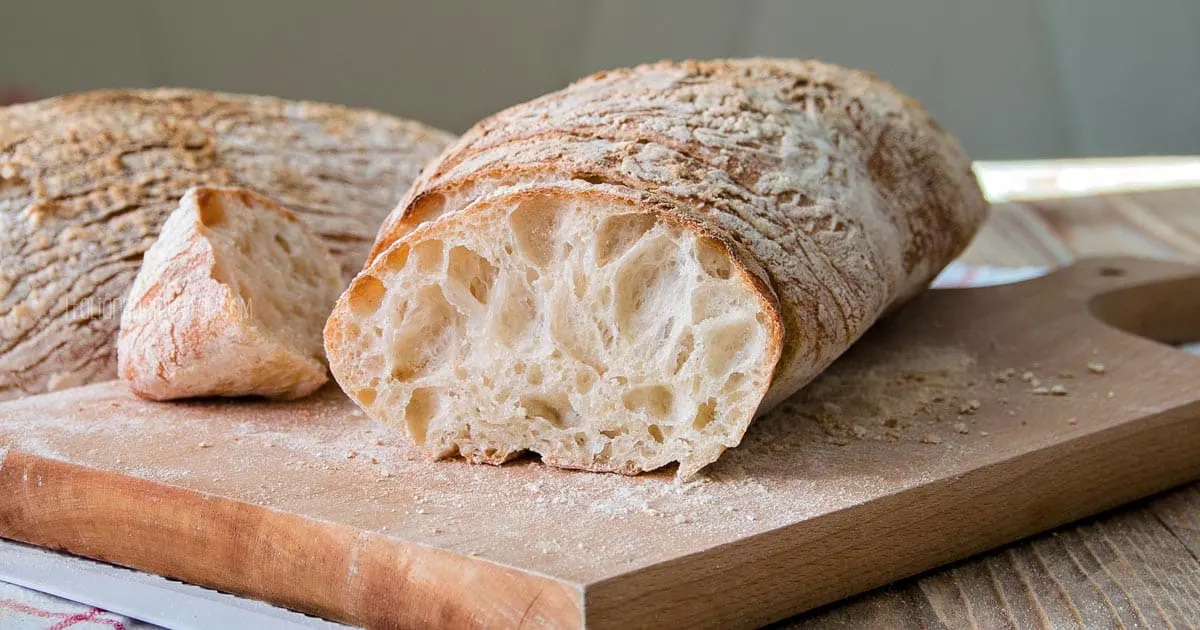Hello, dear reader! Today, I want to share with you a dish that has become a personal favorite of mine – Basic Italian Bread. It’s a delightful blend of crunchy crust and soft interior, capturing all its enticing flavors in a unique and visually appealing presentation.
Creating Basic Italian Bread is like conducting a symphony. Each ingredient plays a crucial role, contributing to the overall harmony of flavors.
Since we’re skipping the recipe part, let’s delve into some cooking tips that can take your Basic Italian Bread from good to great. These are insights I’ve gathered over years of culinary adventures, and I’m excited to share them with you. For the perfect texture and softness, consider incorporating Japanese Milk Bread techniques into your Italian bread-making process. This can elevate the overall experience, giving your bread a light and airy crumb that complements the crunchy crust.


Basic Italian Bread
Equipment
- oven
- 1 stand mixer
- 1 razor blade or sharp knife
- 1 inverted baking sheet
Ingredients
- 40 oz Bread Flour
- 0.75 oz instant yeast
- 0.75 oz salt
- 0.75 oz sugar
- 24 oz Luke warm water
Instructions
- Place the flour, yeast, sugar and salt in the bowl of your stand mixer and mix on low speed until combined.
- Add the water - mix on low speed for 1 minute and medium for 6 min. Dough should form a ball and pull away from the sides of the bowl.
- Transfer the dough to a lightly oiled bowl and spray the dough with a thin coating of cooking spray. Wrap the bowl with plastic wrap and set aside to proof in a warm, draft-free place for 45 minutes.
- Punch down the dough and turn forming it back into a ball, cover and let rise another 45 minutes or until doubled in size.
- Remove the plastic wrap, punch down and divide into 2 rectangular pieces.
- Flatten the dough with the heel of your hand. Roll the dough up tightly, sealing the seam well after each roll. The dough should be elongated and oval-shaped, with tapered and rounded (not pointed) ends.
- Preheat the oven lined with a pizza stone to 425 degrees F. Alternately, an inverted baking sheet may be used in place of a pizza stone.
- Place the dough (seam side down) on a baker's peel heavily dusted with semolina flour, or cornmeal, or alternately on an inverted baking sheet. Allow the dough to proof, loosely covered with a damp towel, for 30 minutes, or until doubled in size. Using a razor blade or sharp knife, score 3 (1/4-inch deep) slashes across the top of the dough at a 45 degree angle.
- Spray the dough generously with water from a water bottle and place in the oven on the baking stone. Immediately close the oven and bake for 3 minutes. Open the oven door and spray the dough again with the water bottle. Close the oven door and bake for an additional 3 minutes before spraying the dough for a third time (the spraying of the dough will ensure a crisp golden brown crust). Bake the dough for 35 minutes or until a hollow thud is heard when you tap the bread on the bottom. Allow the bread to cool slightly before serving.
Video
Notes
Cooking Tips

Creating the perfect Basic Italian Bread is a culinary journey, a symphony of flavors and textures that come together to create a masterpiece in every slice. Here are some tips that I’ve gathered over the years, each one a stepping stone towards mastering this delightful dish.
- Choosing the Right Flour: The soul of Basic Italian Bread lies in its flour. I prefer using a high-quality bread flour. The quality of the flour can significantly impact the overall taste and texture of the bread.
- Hydration Matters: Hydration plays a crucial role in achieving the perfect texture for your Basic Italian Bread. Too little water can result in a dense and heavy loaf, while too much can make the dough difficult to handle. Aim for a hydration level that results in a dough that’s moist but not overly sticky.
- Proper Kneading: Kneading the dough properly is key to achieving the perfect texture. It should be kneaded until it’s smooth and elastic, which helps develop the structure of the bread.
- Proofing is Crucial: Proofing the dough at the right temperature and for the right amount of time is key. It should be proofed until it’s doubled in size, giving the bread a light and airy texture.
- Baking to Perfection: Baking the bread at the right temperature and for the right amount of time is key. It should be baked until it’s golden brown and sounds hollow when tapped on the bottom, indicating that it’s fully cooked.
- Cooling Before Slicing: Basic Italian Bread should be cooled completely before slicing to ensure the best texture and flavor. If you slice it while it’s still warm, the bread may become gummy.
- Experiment with Add-Ins: Don’t be afraid to experiment with different add-ins for your Basic Italian Bread. Seeds, nuts, dried fruits, or even chocolate chips can add a unique twist to the bread.
- Practice Makes Perfect: Finally, remember that practice makes perfect. Making Basic Italian Bread is as much about the journey as it is about the destination. So, take your time, enjoy the process, and most importantly, have fun!
- Adjust to Taste: The beauty of Basic Italian Bread is that it can be adjusted to taste. If you prefer a lighter crumb, use less water. If you like a denser loaf, use more. The key is to find the balance that suits your palate.
Remember, crafting Basic Italian Bread is an act of love. It’s about sharing a dish that you’ve put your heart and soul into. So, take your time, experiment with these tips, and most importantly, savor the reactions of delight and satisfaction from your loved ones as they enjoy this comforting treat.
How to Serve Basic Italian Bread

Serving Basic Italian Bread is not just about placing a dish on the table; it’s about creating an experience, a delightful culinary journey that lingers long after the last bite has been savored. This delightful bread, with its crunchy crust and soft interior, deserves to be served with as much care and attention as it was prepared. Here are some tips and insights I’ve gathered over the years on how to serve Basic Italian Bread in a way that enhances its flavors and creates a memorable dining experience.
- Oyakodon – The simplicity of this Japanese chicken and egg rice bowl, with its subtly sweet and savory flavors, offers a comforting balance to a frittata’s richness.
- Pesto Panini – If the frittata is served at room temperature or as part of a brunch spread, a pesto panini provides a herby and cheesy flavor that plays well with the egginess of the frittata and the crustiness of the bread.
- Daikon Salad – This refreshing Japanese salad will provide a crunch and a peppery yet sweet contrast to the frittata, cleansing the palate between bites.
- Negi Oil – Drizzling some aromatic negi (scallion) oil over the frittata could introduce an Asian twist to the Mediterranean dish, adding depth of flavor.
- Wasabi – For those seeking an adventurous flavor kick, a small side of wasabi could be presented to dab onto the frittata for a sharp contrast.
- Egg Salad – Piling egg salad onto Italian bread creates a sandwich that’s rich in texture and flavor, contrasting with the fluffy lightness and baked consistency of the frittata.
- Kalmi Kabab – This Indian appetizer offers a smoky, spiced counterpoint that’s robust enough to stand up to the eggs and bread but will not overwhelm the palate.
- Miso Soup – Starting with a light miso soup can set the stage for a richer frittata, providing balance and comfort.
- Hemp Milk, Oat Milk, Soy Milk, Rice Milk, Almond milk, Coconut Milk, Cashew Milk, Flax Seed Milk, Hazelnut Milk, Quinoa Milk – Any of these plant-based milks could be used in a hot beverage or smoothie to complement the meal, catering to those preferring non-dairy options.
- BEEF STOCK – Offering a cup of rich beef stock on the side could provide a hearty, umami-rich sipping experience between bites of frittata and Italian bread.
- Olive Tapenade – As an additional suggestion, a classic olive tapenade spread over the Italian bread could echo the Mediterranean flavors of the frittata.
- Greek Dolmades – The herbed rice mixture wrapped in grape leaves would contribute a Mediterranean medley of flavors that suit the frittata’s profile.
Remember, the best way to serve Basic Italian Bread is with love and attention to detail. Each step, from choosing the right bread board to adding the final spread, is an opportunity to enhance the dish and create a memorable experience. So embrace the process, experiment with different ideas, and most importantly, have fun!
FAQs

Over the years, I’ve encountered several questions about Basic Italian Bread. Here are some answers that might satisfy your curiosity:
Can Basic Italian Bread be made with other types of flour?
Absolutely! Just replace the bread flour with another type of flour for a different flavor and texture.
Can I prepare Basic Italian Bread in advance?
Yes, you can prepare the dough in advance and bake it just before serving to ensure a fresh and warm loaf.
Can I use store-bought bread flour for this bread?
Definitely! You can use store-bought bread flour to save time, but a homemade blend will give the bread a unique flavor and texture.
What can I serve with Basic Italian Bread?
You can serve it with some olive oil and balsamic vinegar for dipping, or use it to make sandwiches.
Is Basic Italian Bread very dense?
It can be, but if you follow the tips I’ve shared, you should end up with a loaf that’s light and airy on the inside with a beautiful crusty exterior.
As I conclude this culinary tale, I find myself filled with a sense of contentment. Basic Italian Bread, for me, is more than just a dish. It’s a comforting embrace in a slice, a soothing companion on chilly nights, and a culinary adventure that always leaves me excited for more.
So, my dear reader, I invite you to embark on your own journey with Basic Italian Bread. Trust me, it’s a ride worth taking.
Remember, the best way to serve Basic Italian Bread is with love and attention to detail. Each step, from choosing the right flour to adding the final garnish, is an opportunity to enhance the dish and create a memorable experience. So embrace the process, experiment with different ideas, and most importantly, have fun!